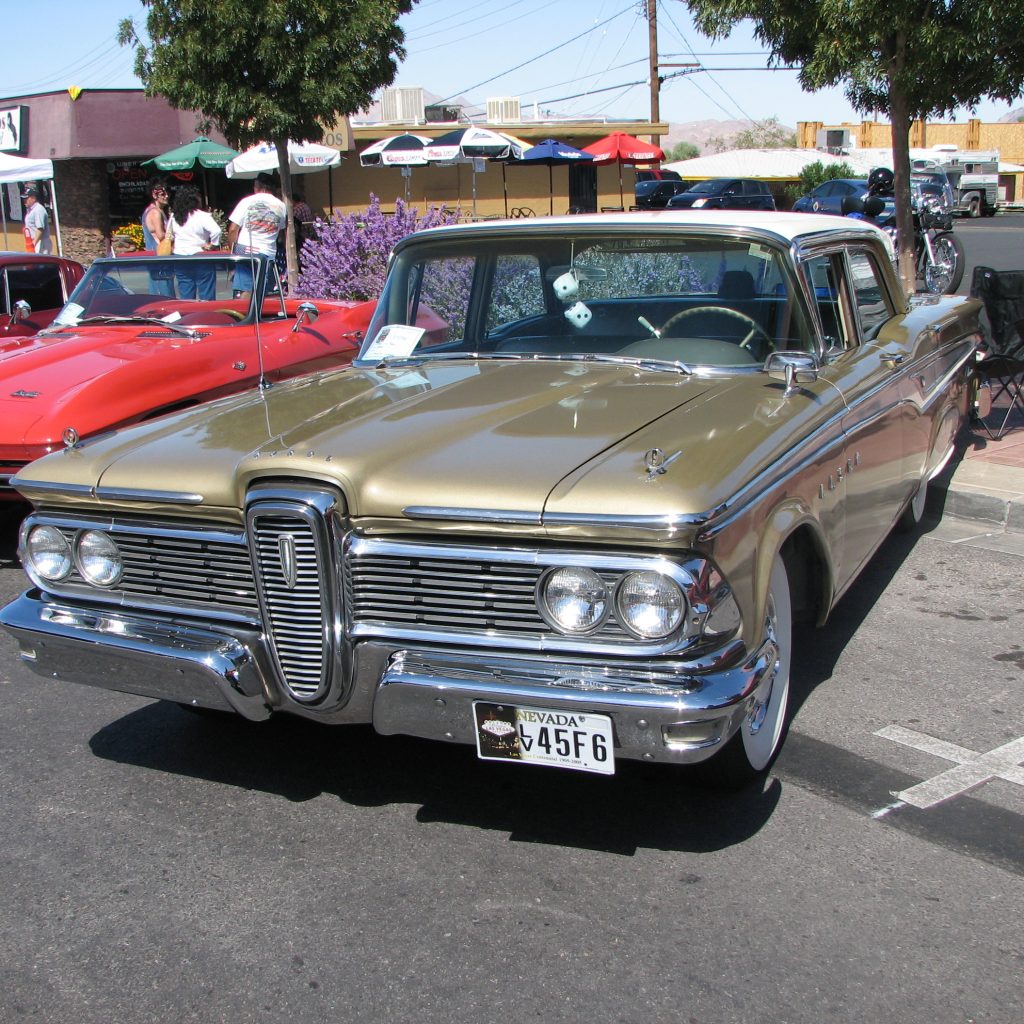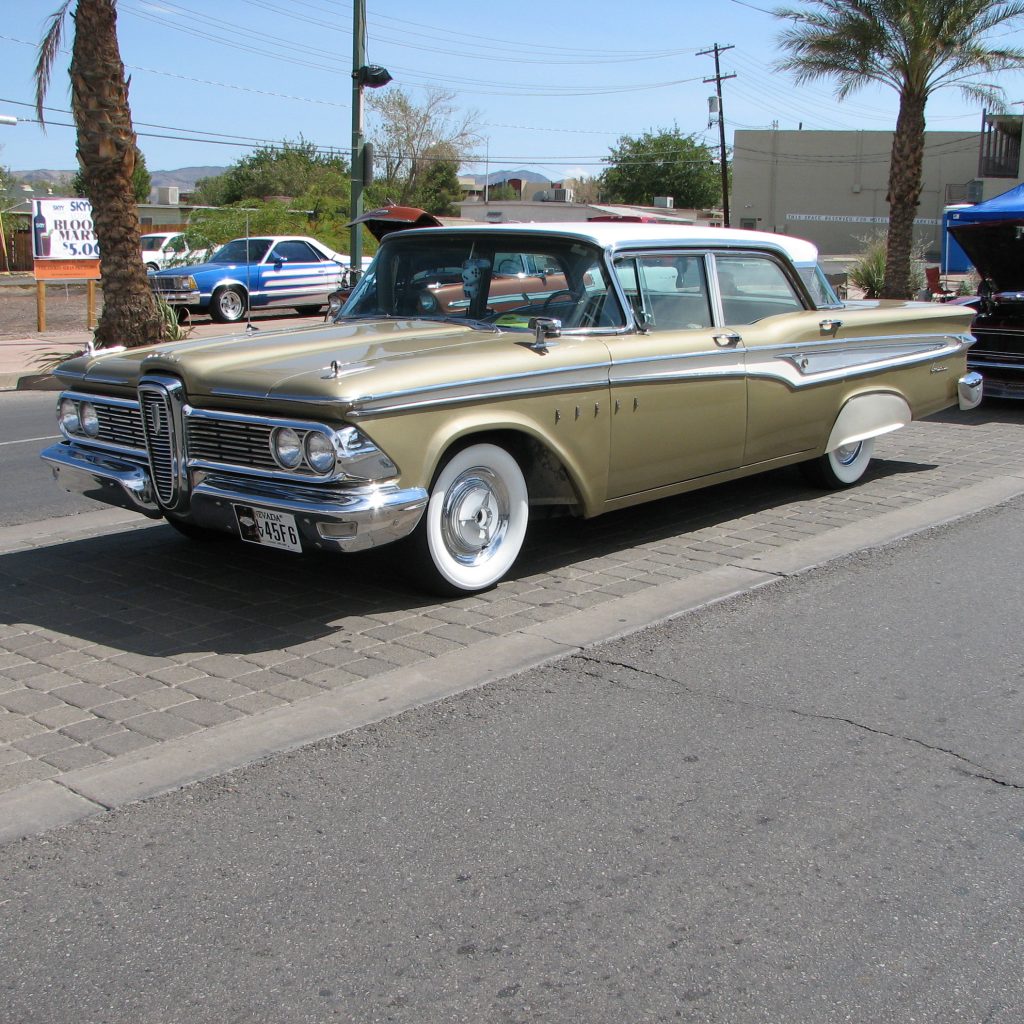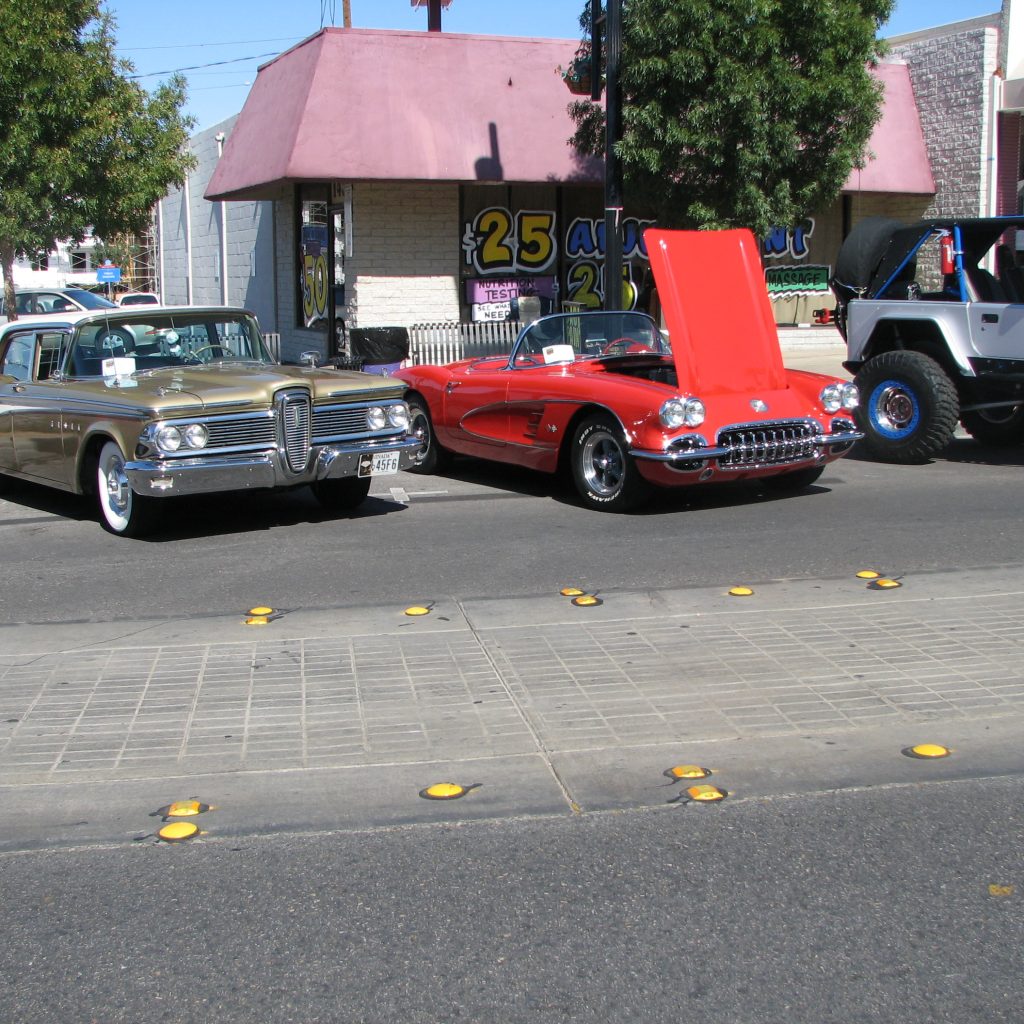

Edsel’s most memorable design feature was its trademark “horsecollar” grille, which was distinct from that of other cars of the period. According to a popular joke at the time, Edsels “resembled an Oldsmobile sucking a lemon”.

According to Thomas E. Bonsall’s book, Disaster in Dearborn (2002), it was assistant stylist Bob “Robin” Jones, who suggested a vertical motif for the front end of the “E-car”.
Edsel’s front end bore little resemblance, if any, to the original concept. Roy Brown, the original chief designer on the Edsel project, had envisioned a slender, almost delicate opening in the center. Engineers, fearing engine cooling problems, vetoed the intended design, so a ring design was suggested. Ernest Breech then demanded that the grille be taller and wider, which led to the “horsecollar”. The vertical grille, after being improved for the 1959 models, was discontinued for the 1960 models, which were similar to Ford models of the same year, although coincidentally, the new front end was very similar to that of the 1959 Pontiac.

Complaints also surfaced about the taillights on 1958 Edsel station wagons. The lenses were boomerang-shaped and placed in a reverse fashion. At a distance, they appeared as arrows pointed in the opposite direction of the turn being made. When the left turn signal flashed, its arrow shape pointed right, and vice versa. However, there was little that could be done to give the Ford-based station wagons a unique appearance from the rear, because corporate management had insisted that no sheetmetal could be changed. Only the taillights and trim could be touched. There was room for separate turn signals in addition to the boomerangs, but the U.S. industry had never supplied them up to that point, and they were probably never seriously considered.
The Teletouch pushbutton automatic transmission selector was an extremely complex feature. It proved problematic in part because the steering wheel hub, where the pushbuttons were located, was the traditional location of the horn button. Some drivers inadvertently shifted gears when they intended to sound the horn. While Edsels were fast, the location of the transmission pushbuttons was not conducive to street racing. There were also jokes among stoplight drag racers about the buttons: D for Drag, L for Leap, and R for Race (instead of Drive, Low and Reverse). The control wires for Teletouch were also routed too close to the exhaust manifold, which often caused unpredictable movement of the selector mechanism and, in some cases, complete failure. The electrical design required drivers to shift from Park to Reverse to Neutral to Drive, in that order, to avoid overloading the Teletouch motor. The motor was also not powerful enough to bring the car out of Park while on a hill, so dealerships would instruct drivers to set the parking brake before pushing the Park button.
Mechanics of the time were wary of the 410-cubic-inch Edsel “E-475” engine because its perfectly flat cylinder heads lacked distinct combustion chambers. The heads were set at an angle, with “roof” pistons forming both a squish zone on one side and a combustion chamber on the other. Combustion thus took place entirely within the cylinder bore. This design was similar to Chevrolet’s 348-cubic-inch “W” engine, which was also introduced in 1958. While the design reduced the cost of manufacture and may also have helped minimize carbon buildup, it was also unfamiliar to many mechanics.






